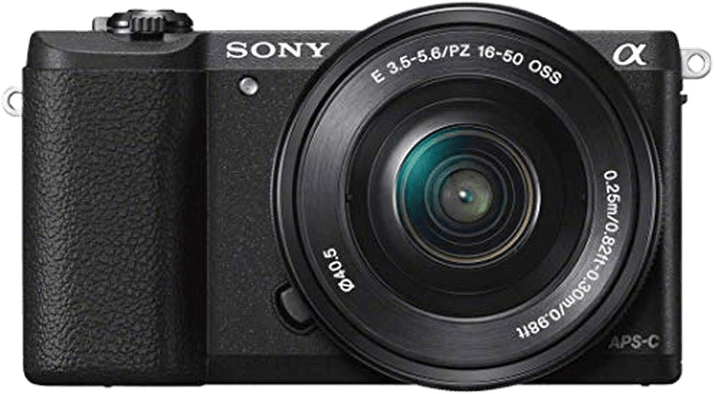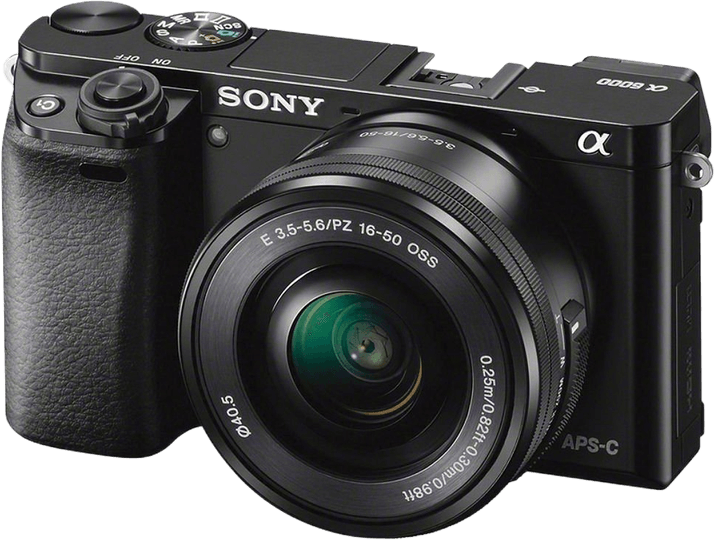Sony a5100 vs a6000 Comparison
Sony a5100

Sony a6000

The Sony a5100 emerges as the winner with a score of 60/100, while the Sony a6000 comes in close with 57/100. Both cameras are mirrorless and were released in 2014, with the a5100 having a launch price of $550 and the a6000 at $799. They share similar dimensions, with the a5100 measuring 110 x 63 x 36mm and weighing 283g, and the a6000 at 120 x 67 x 45mm and 344g in weight.
The winning a5100 is a more compact and lightweight option, making it easier to carry around. On the other hand, the a6000 has a slightly larger size, which can provide a better grip and handling experience for some users. Despite the higher launch price, the a6000 does not surpass the a5100 in terms of scoring.
Taking all factors into account, the Sony a5100 is the better camera due to its higher score, compact size, and lower launch price. However, the Sony a6000 may still appeal to those who prefer a larger camera for improved handling.
Sony a5100 vs a6000 Overview and Optics
The Sony a6000 wins in optics with a score of 67/100, just one point ahead of the Sony a5100, which scores 66/100. Both cameras share several common specifications, including a 24.3-megapixel CMOS sensor, Bionz X processor, APS-C sensor size, Sony E lens mount, and no image stabilization. These similarities result in a close competition between the two cameras.
The Sony a6000 has a slightly better DXOMARK score for the sensor, at 82 compared to the Sony a5100’s score of 80. This difference indicates that the Sony a6000’s sensor performs better in terms of dynamic range, color depth, and low-light performance. Additionally, the Sony a6000 has a superior shooting speed of 11 frames per second (fps) compared to the Sony a5100’s 6 fps. This means that the Sony a6000 is more suitable for capturing fast-paced action, such as sports or wildlife photography.
On the other hand, the Sony a5100 does not have any significant advantages in terms of optics. The cameras are nearly identical in this aspect, with the a6000 only slightly outperforming the a5100. This similarity between the two cameras makes it difficult to differentiate them based on optics alone.
Taking these factors into consideration, the Sony a6000 is the better choice when it comes to optics, due to its higher DXOMARK sensor score and faster shooting speed. However, the Sony a5100 remains a strong contender, offering similar specifications and performance in a compact package. Ultimately, the choice between these two cameras will depend on the individual photographer’s needs and preferences.
Sony a5100 vs a6000 Video Performance
When comparing the video capabilities of the Sony a5100 and the Sony a6000, both cameras have a video score of 56/100. This means that there is no clear winner in terms of video performance, as they share the same score.
The Sony a5100 and a6000 share common video specifications, including Full HD max video resolution, max video dimensions of 1920 x 1080, and a max video frame rate of 60fps. Neither camera has built-in time-lapse functionality. These shared features make both cameras suitable for general video recording purposes.
Since both cameras have the same score and share identical video specifications, it is difficult to determine which camera is better solely based on their video capabilities. However, individual preferences and shooting styles may lead some users to prefer one camera over the other.
In conclusion, the Sony a5100 and a6000 have identical video capabilities, with no clear winner between the two. Both cameras offer Full HD resolution, 1920 x 1080 dimensions, and a 60fps frame rate, providing a solid video performance for general use. Ultimately, the choice between these two cameras depends on individual preferences and needs, rather than any significant differences in their video features.
Sony a5100 vs a6000 Features and Benefits
The Sony a5100 takes the lead in features with a score of 54/100, while the Sony a6000 trails behind with a score of 41/100. Both cameras share some common specifications, such as a 3-inch screen size, 921,600-dot screen resolution, flip screen, no GPS, WIFI connectivity, and no Bluetooth.
The Sony a5100 stands out with its touchscreen feature, allowing users to access settings and controls more efficiently. The touchscreen also enables photographers to select focus points quickly, making it easier to capture the perfect shot. This advantage contributes to the higher feature score of the Sony a5100.
On the other hand, the Sony a6000 does not offer any significant advantages over the a5100 in terms of features. Both cameras have the same screen size, resolution, and connectivity options. The lack of a touchscreen puts the a6000 at a slight disadvantage compared to the a5100.
Considering the features of both cameras, the Sony a5100 emerges as the superior choice due to its touchscreen capability. This added feature provides users with more control and ease of use, making it a better option for those who prioritize convenience and efficiency. The Sony a6000, while still a reliable camera, does not offer any distinct advantages over the a5100 in terms of features. Therefore, the Sony a5100 is the recommended choice for photographers seeking a camera with more advanced features.
Sony a5100 vs a6000 Storage and Battery
The Sony a5100 wins in the storage and battery category with a score of 24/100, compared to the Sony a6000’s 21/100. Both cameras share the same specifications in terms of memory card slots, accepting one SD/SDHC/SDXC or Memory Stick Pro Duo/Pro-HG Duo card. Neither camera offers USB charging.
The a5100’s advantage lies in its battery life, providing 400 shots per charge, while the a6000 falls slightly behind with 360 shots. Both cameras utilize the NP-FW50 battery type. The Sony a6000 does not have any notable advantages in this category.
Considering the storage and battery aspects, the Sony a5100 edges out the a6000 with a slightly longer battery life. However, the difference is minimal and may not significantly impact the overall user experience.
Sony a5100 vs a6000 Alternatives
Still not sure which camera is best for you? Check out some more popular camera comparisons for inspiration:
